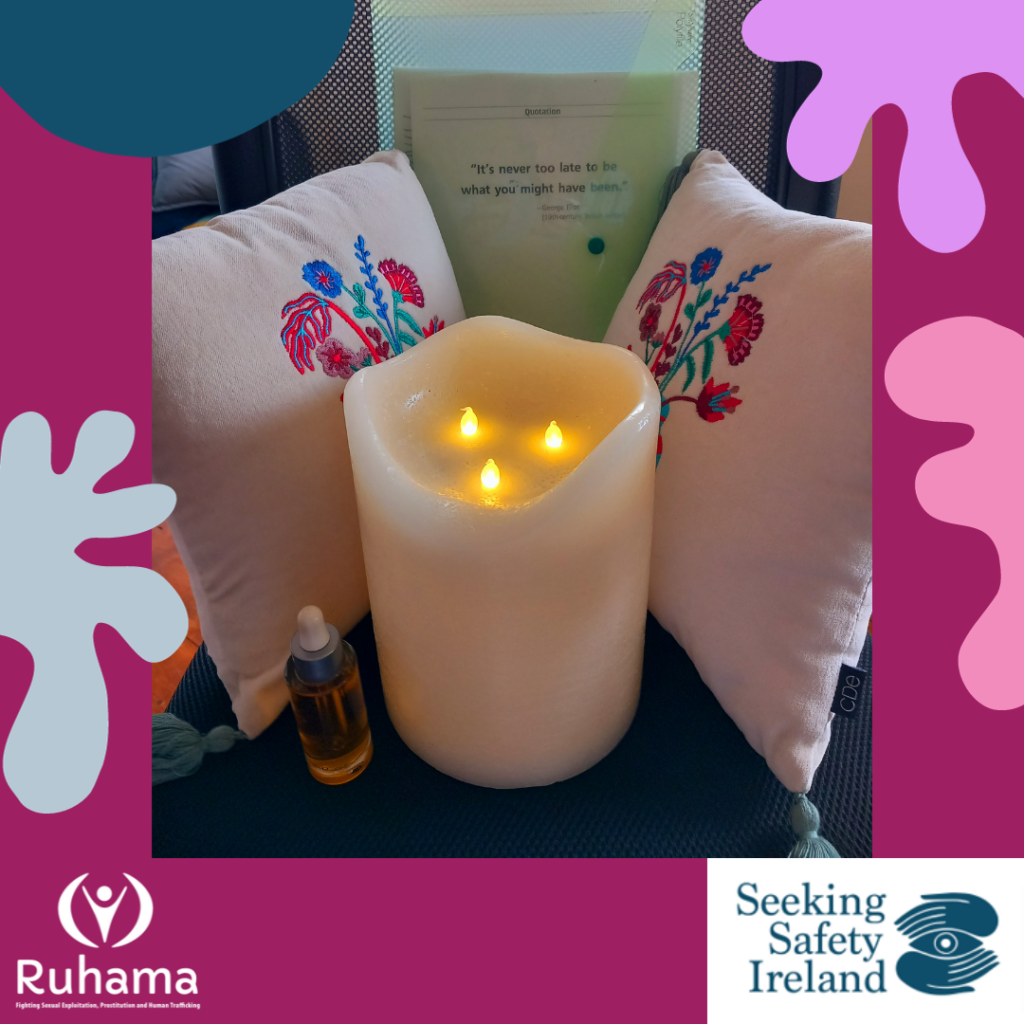The Seeking Safety Programme is a coping skills approach to help women attain safety from trauma and/or addiction. It is present-focussed and designed to be safe, optimistic and engaging. The treatment is highly flexible. It can be conducted in group or individual format, open or close groups. It can be used from the start of treatment as it is stabilisation-oriented. It can be used with clients who have trauma and/or addiction problems (they do not have to have both).
Seeking Safety was developed in 1992 by Lisa M. Najavits, PhD at Harvard Medical School and McLean Hospital. It has been used in many countries and has translated into numerous languages.
Delivered by Ruhama’s Debbie Kearns and Megan O’Loughlin, Seeking Safety is an evidence-based, present-focused counselling model to help service-users attain safety from trauma and/or substance abuse. It can be conducted in groups or individually. The programme directly addresses trauma and addiction without requiring clients to examine in detail their disturbing trauma memories. It can be conducted over any number of sessions available although the more the better when possible
Seeking Safety offers 25 topics that can inform coping:
Introduction/Case Management,; Safety, PTSD: Taking Back Your Power, When Substances Control You, Honesty, Asking for Help, Setting Boundaries in Relationships, Getting Others to Support Your Recovery, Healthy Relationships, Community Resources, Compassion, Healing from Anger, Creating Meaning, Discovery, Integrating the Split Self, Recovery Thinking, Taking Good Care of Yourself, Commitment, Respecting Your Time, Coping with Triggers, Self-Nurturing, Red and Green Flags, Detaching from Emotional Pain (Grounding). Life Choices, and Termination.
The key principles of Seeking Safety:
- Safety as the overarching goal (helping clients attain safety in their relationships, thinking, behavior, and emotions).
- Integrated treatment (working on both trauma and substance abuse at the same time if the person has both).
- A focus on ideals to inspire hope.
- Four content areas: cognitive, behavioural, interpersonal and case management.
- Attention to clinician processes (clinicians’ emotional responses, self-care and other issues.)
Additional features
Traumas are not described in detail. Clients to not have to tell or listen to intense trauma detail. We focus on trauma as it impacts the client in the present. The programme allows for harm reduction or abstinence approaches and encourages but does not require 12-step and other self-help groups.
There is a focus on empowerment and choice and it is written in everyday language to be accessible to all. Facilitators meet clients where they are at in terms of addiction and clients do not require abstinence or motivation to quit, instead, these often develop as they do Seeking Safety over time.
No one is excluded from Seeking Safety. Anyone receiving services of any kind can participate. It has been successfully conducted with people who are psychotic, illiterate, homeless, severely mentally ill, suicidal and have histories of violence.
Anyone can conduct it. It has been implemented by all types of professionals and also by peers and paraprofessionals. No specific licence, degree or education is required. Training is available and recommended but only required if formal publishable clinical trials are being conducted for research purposes.
If you’re interested in participating in the Seeking Safety Programme contact us at [email protected]

